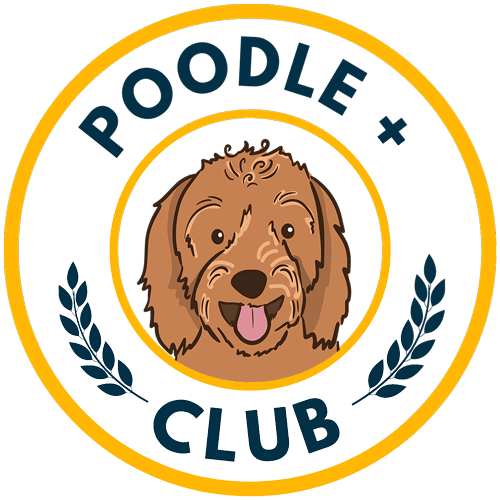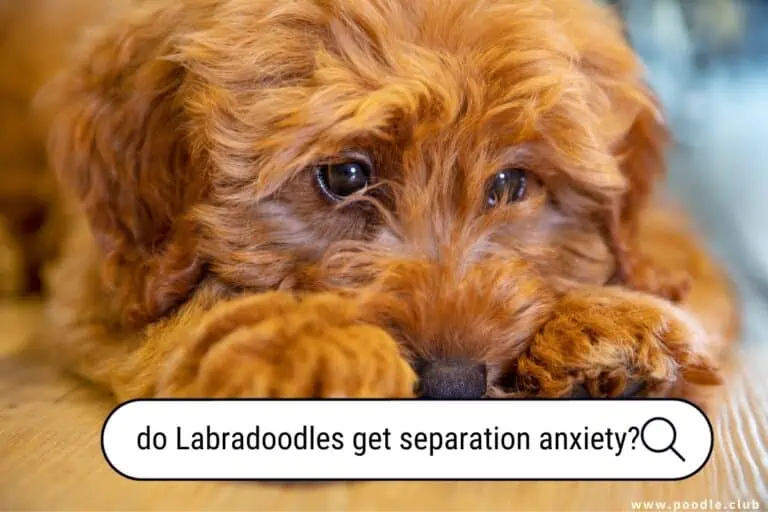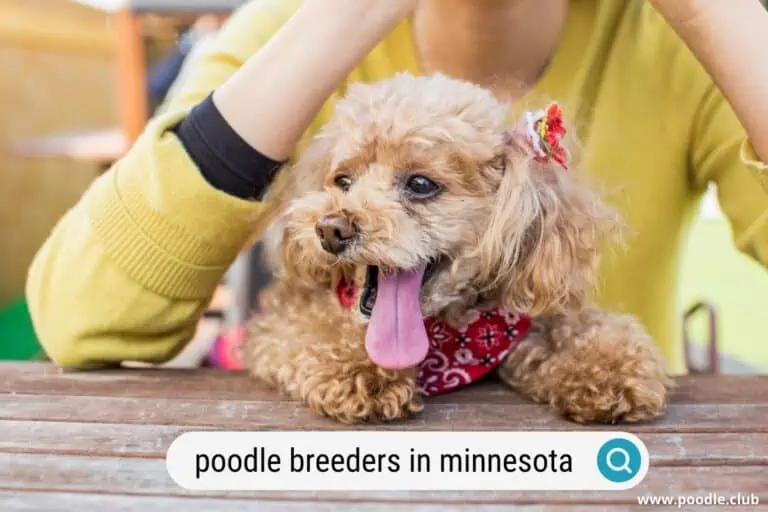Maltipoo vs Toy Poodle [Comparison with Photos]
Preparing to welcome a new dog into your home is always exciting. But it’s also crucial to choose the right breed—far too many pets end up in animal shelters because their owners didn’t know how large they’d grow or what their personalities would be.
So, you’re in luck if you want to learn about the Maltipoo vs. Toy Poodle. Both dogs are excellent breeds, but they also have notable differences that could make or break your decision. Read on to learn about what they are.
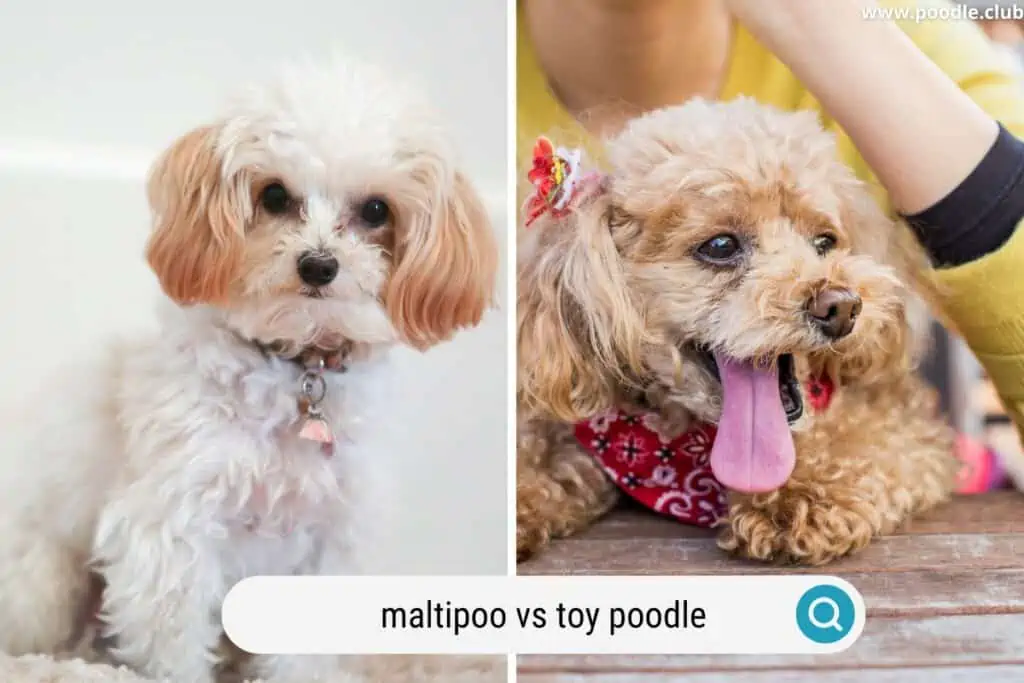
A Background on the Toy Poodle
Toy Poodles are a small dog breed, measuring no more than ten inches tall from their paws to their shoulders. According to the Kennel Clubs, they must also weigh between 4 – 6 pounds to qualify as a Toy Poodle.
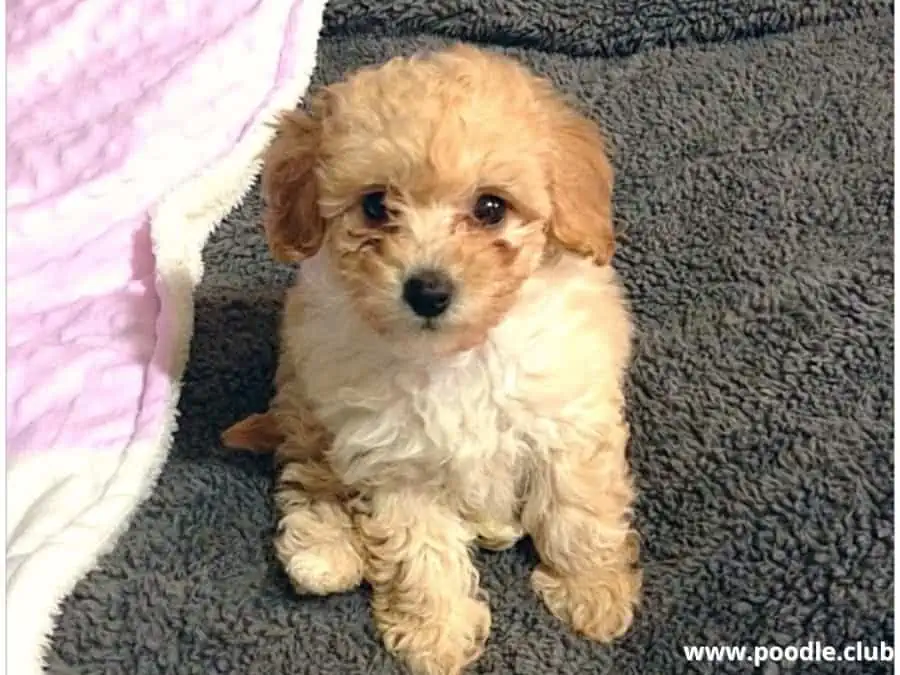
These dogs have the same genes as the larger Standard Poodle. However, breeders bred them to be smaller in size, making the transition from them being outdoor water dogs to indoor lap companions.
Nowadays, Toy Poodles are also a popular breed to use for showing.
The reason that so many people choose to trim their Toy Poodle’s hair for both showing and at home goes back to a piece of unexpected history—to help their Poodles move more freely through the water, hunters cut their Poodles’ coats. However, they left their joints and chests covered in fur to keep them warm.
Since the Toy Poodle’s development in the early 20th century, they’ve become a popular dog for the elderly who love animals but can’t exercise a bigger dog. These animals are also loyal, friendly, and energetic.
PuppySpot is a reputable dog marketplace where you can browse and find compatible puppies right from the comfort of your home. They have placed over 200,000 puppies into homes in the US!
A Background on the Maltipoo
Maltipoos are a combination of the Maltese and either the Toy or Miniature Poodle. These dogs run a larger weight and height range than Toy Poodles if mixed with Mini Poodles.
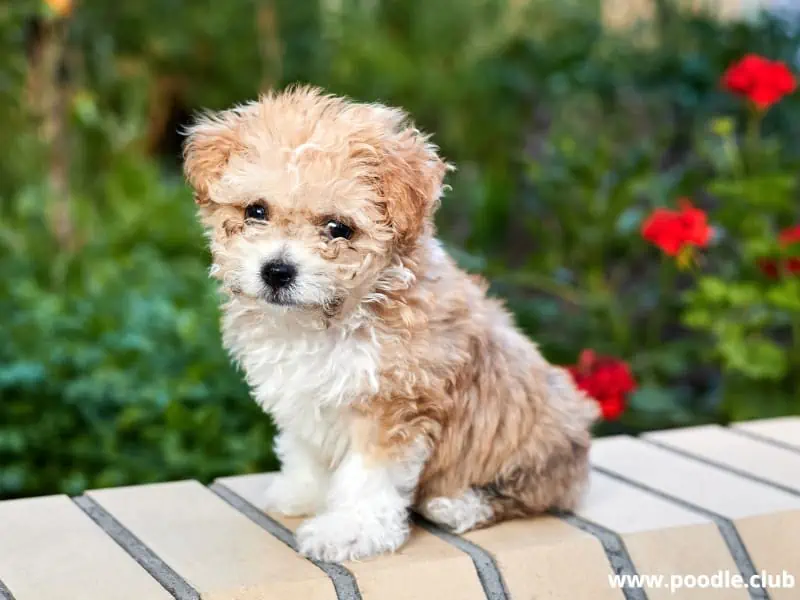
The Maltese have a long history, being around since the Bible days. Despite their small size, these little dogs pack a punch for their size, having an artful gate and being excellent athletes.
The Maltese and Toy Poodle mixing resulted in people calling the Maltipoo a designer breed. This term is common among other mixes of Toy Poodle breeds.
If you choose to welcome a Maltipoo into your family and you’re concerned about having a “pure” Maltipoo, it’s crucial to get the first-generation dog. That way, it’ll have an equal Toy Poodle and Maltese ratio.
In contrast, if you purchase a second-generation Maltipoo, it’ll have two first-generation Maltipoo parents. Similarly, a third-generation Maltipoo has parents that are both second-generation.
The Maltipoo isn’t yet an official breed, although the American Kennel Club still has a page about them, indicating that this will likely happen in the future. Before that happens, though, the Maltipoo will need to take on more features of the Toy Poodle in terms of having less variation in size, face shape, leg length, and more.
Comparison of Maltipoos and Toy Poodles
Now that you understand the history of the Maltipoo and Toy Poodle, let’s explore how these dogs are similar and different.
Size
Toy Poodles have a small, set size range, being classified in the “Toy” category if they’re under 10 inches tall. In contrast, a Maltipoo can grow from 8 to 14 inches tall and weigh between 5 to 20 pounds.
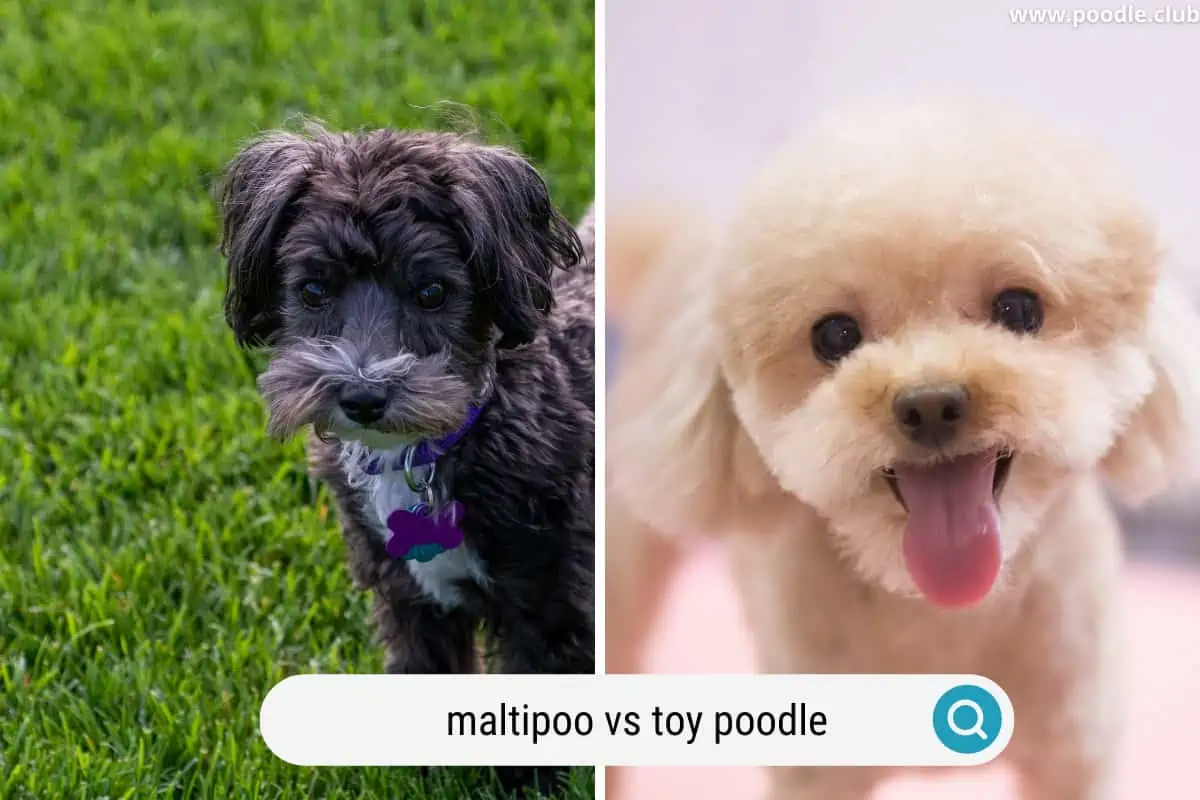
Nevertheless, since many Maltese dogs only grow 8 to 10 inches tall, it’s common to encounter Maltipoos on the smaller end of that range. That said, if you buy a Maltipoo mixed with a Miniature Poodle, it’s common for them to grow taller.
The bottom line is that Toy Poodles have a more consistent height range than Maltipoos. So, make sure to consider this if you want a tiny dog.
Head Shape
Looking at the facial features of the Maltipoo vs. Toy Poodle is one of the easiest ways to tell the difference between these breeds. Toy Poodles have a classic long, delicate muzzle. There’s also a defined L-shaped chisel where the area beneath the eye meets the snout.
In contrast, Maltipoos have a rounder and shorter noses. However, some people sometimes mistake these noses based on the shape of the hair. Therefore, you may need to take a closer look to ensure the snout is as long or short as it initially seemed.
Color Choices
Maltese dogs are almost always pure white, meaning that it’s common for Maltipoos to have white mixed in with their coat.
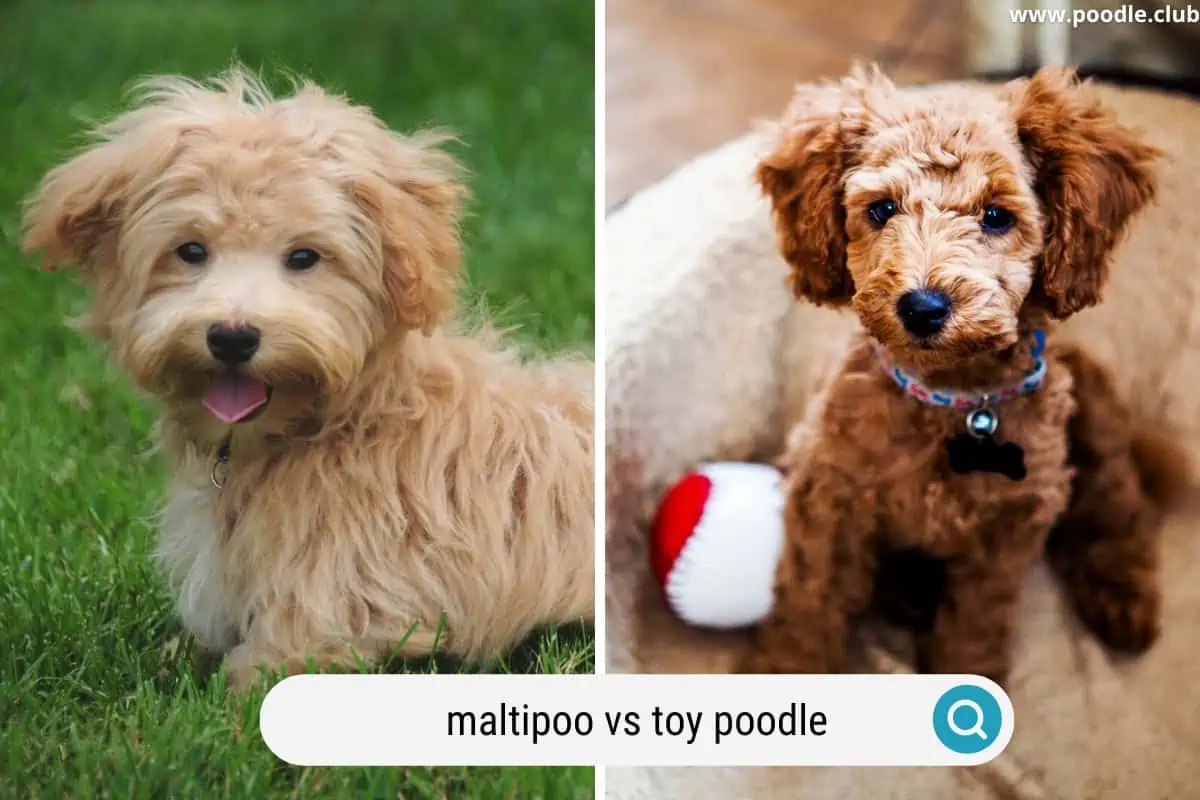
In contrast, Toy Poodles come in a range of colors. Examples include:
- Black
- White
- Apricot
- Brown
- Gray
- Red
Additionally, it’s common to see Toy Poodles with a mix of colors, such as sable or black and white.
Interestingly, Poodles have a fading gene that can cause their fur to lighten over time. That, coupled with the Maltese’s lighter coat color, means that you can expect Maltese to have an overall lighter appearance. Nevertheless, it’s possible to encounter the rare solid black or dark red Maltipoo.
Coat Texture
If you’re still on the fence about whether you’re looking at a Maltipoo or Toy Poodle, the dog’s coat is a sure-fire sign to help you make up your mind.
Toy Poodles have a classic curly coat, thanks to the KRT71 gene. The coat will also feel coarse to the touch. Unlike many dog breeds, a Poodle’s coat is in a constant state of growth.
For this reason, it’s crucial to clip their hair regularly.
In contrast, the Maltipoo’s coat has more variation. Some dogs take on a Poodle-like coat with lots of curls. Other times, they may inherit the straight fur of their Maltese parent.
And yet, in other cases, Maltipoos have a coat that falls somewhere between straight and curly.
Both the Toy Poodle and Maltipoo have single-layer coats. However, Maltipoos often have a finer coat rather than a dense one. It’s also softer to the touch than a Toy Poodle’s coat.
Hypoallergenic Qualities
Both Toy Poodles and Maltipoos have hypoallergenic properties, although the Toy Poodle sheds less than Maltipoos, given that the hair they shed remains trapped within its curls.

Before you bring a Maltipoo or Toy Poodle home to a family member with allergies, make sure they spend time around the animal first. That’s because no dog is truly hypoallergenic.
Instead, the term “hypoallergenic” refers to dogs who shed little, meaning that they release less dander. Therefore, many people with allergies can live with them without adverse side effects.
Personality Traits
A breed’s personality is undoubtedly an important factor when deciding to bring home a Maltipoo or Toy Poodle. The good news is that both of these breeds are loving, friendly dogs.
Of the two, Toy Poodles tend to have more energy than Maltipoos. They’re also fiercely loyal to their owners, meaning that it’s common for them to release their energy via separation anxiety when things don’t go their way.
It’s wise to bring your Toy Poodle to a trainer shortly after you bring them home. The trainer can work with them to reduce barking and destructive behavior that often comes with high energy and separation anxiety.
In contrast, Maltipoos are relatively more laid-back dogs, although Maltipoo puppies will still have plenty of energy. Like Toy Poodles, they create strong bonds with their owners and typically get along well with other dogs.
Both Maltipoos and Toy Poodles are great with children. However, if you have young children, you should always supervise them around your pet, for children can accidentally injure these small dogs, given their fragile nature.
Health Conditions
Since Maltipoos are crossbred dogs, they tend to suffer from fewer health-related issues than Toy Poodles.
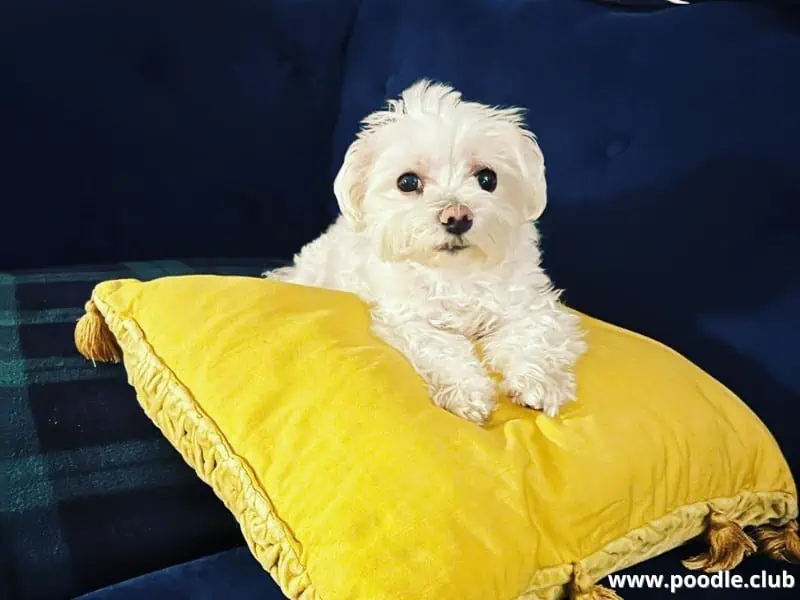
Some of the most common health-related problems in Maltipoos include:
- White Shaker Syndrome
- Epilepsy
- Portosystemic Shunt
- Retinal atrophy
White Shaker Syndrome is a particularly noteworthy disease on this list, as it commonly occurs in dogs with white fur. You can expect to see symptoms of this disease in dogs between six months and three years old.
In contrast, because Toy Poodles are purebreds, there isn’t as much diversity in their genes, leading to more health issues. Examples of common diseases in Toy Poodles include:
- Tracheal collapse
- Bladder stones
- Cushing’s Disease
- Cataracts
- Skin tumors
Whether you decide to choose a Toy Poodle or Maltipoo, if you go with a breeder, it’s crucial to request information about the parents’ health. That way, you’ll have an idea of the chances of your pet getting ill at a young age.
Maltipoo vs. Toy Poodle: What’ll It Be?
Maltipoos and Toy Poodles are both joys to have in the home, as they’re playful, great with people, and loving.
Since Toy Poodles are purebred dogs, there’s more consistency in their size, coat type, and physical features. On the other hand, Maltipoos come in more different varieties, especially if you bring home a second or third-generation dog.
I’ll leave it up to you at this point. But, regardless of which dog breed you choose, I guarantee they’ll give you many cuddles and wet kisses.
